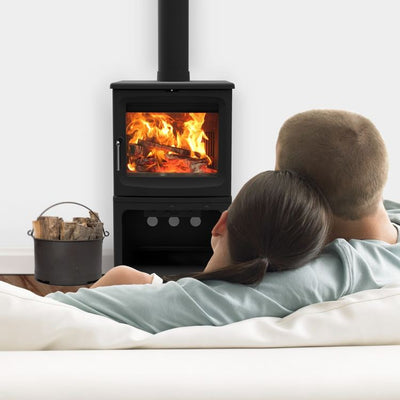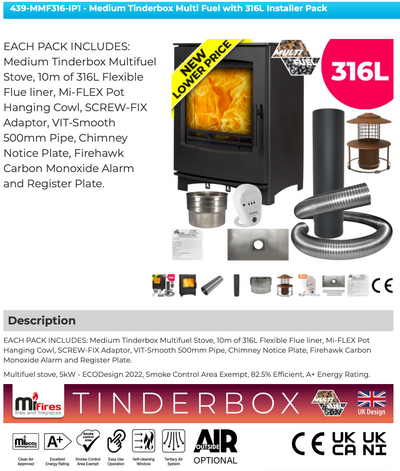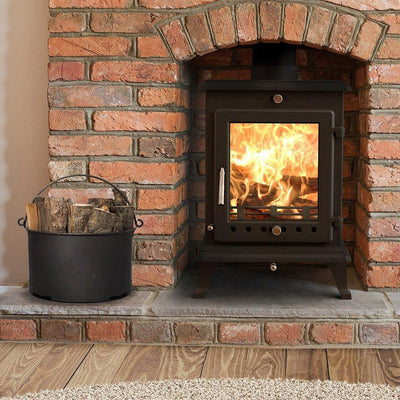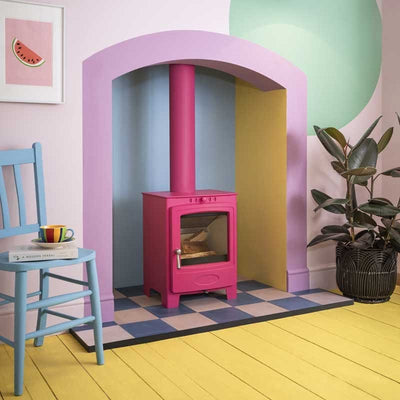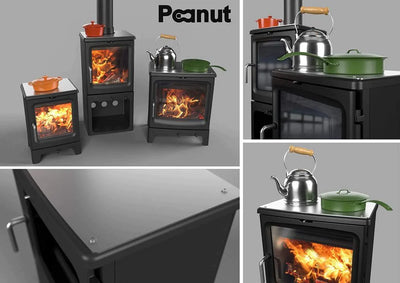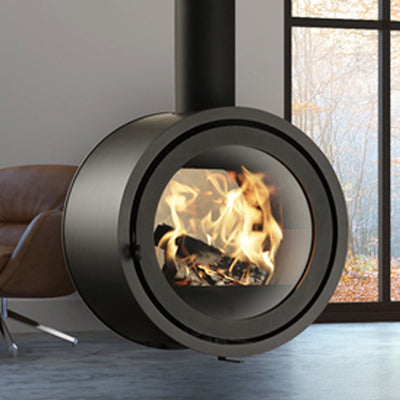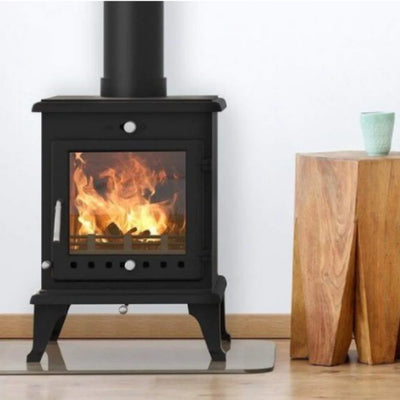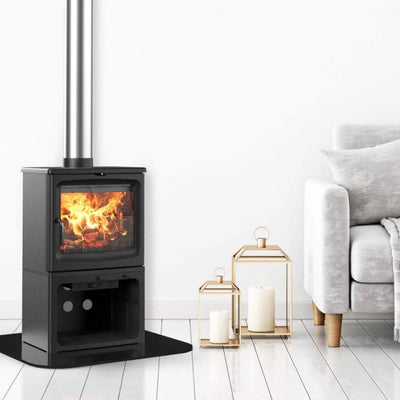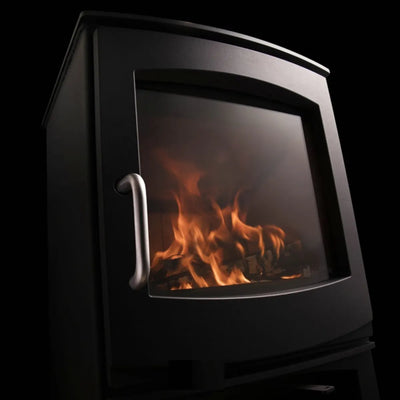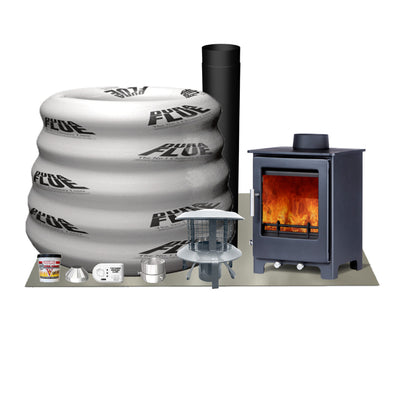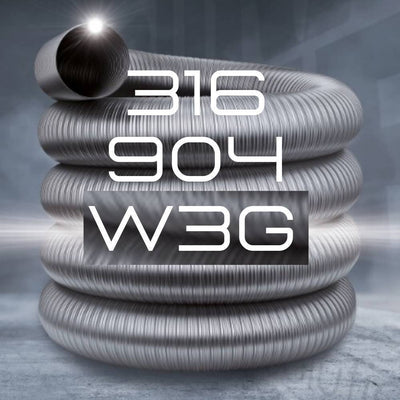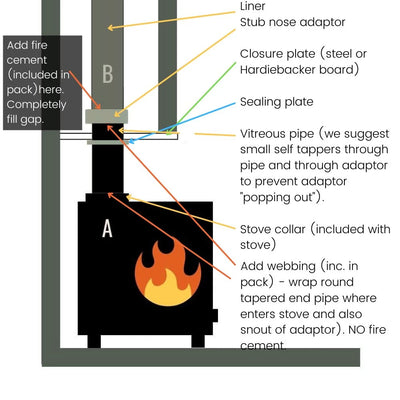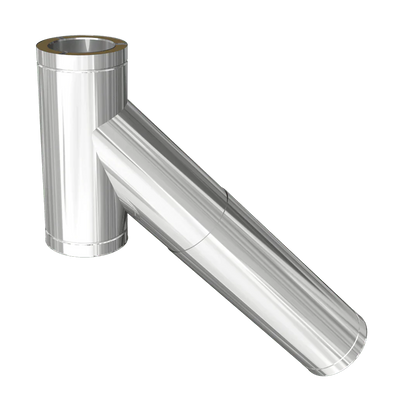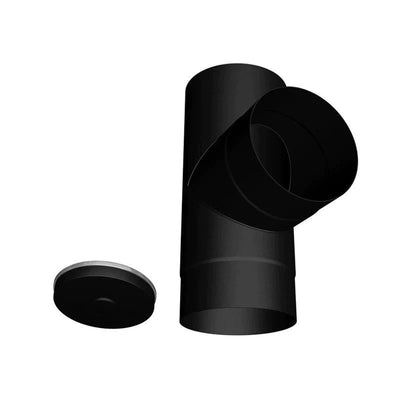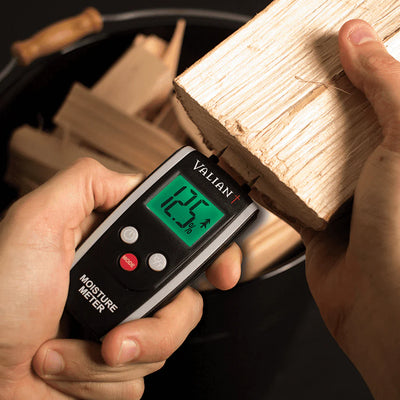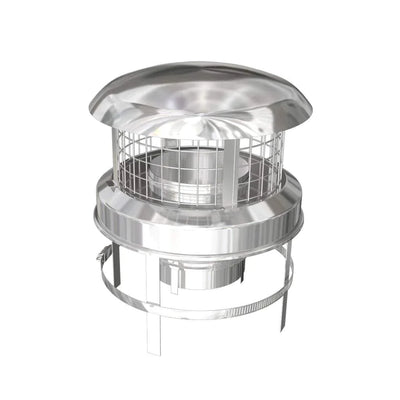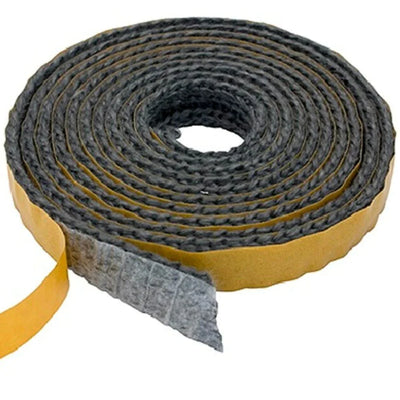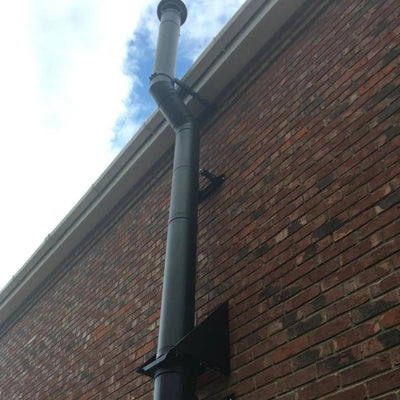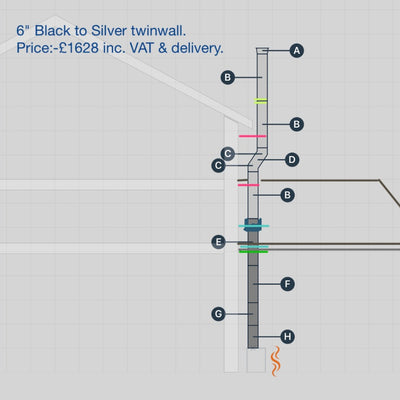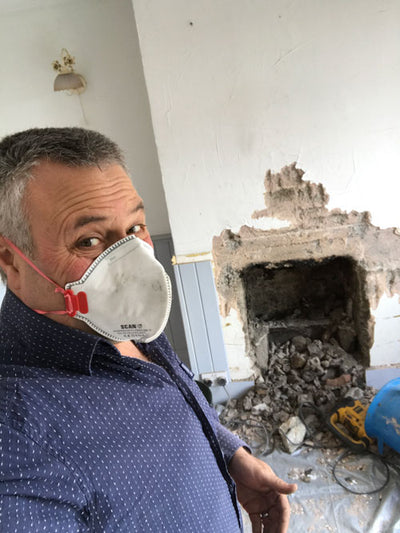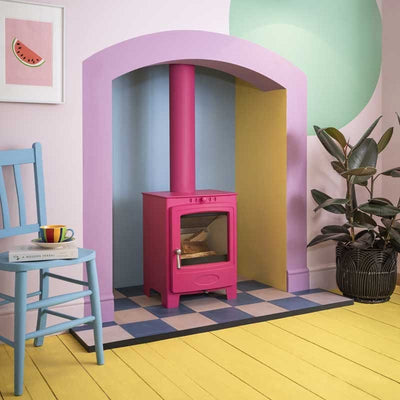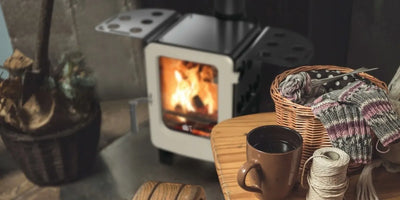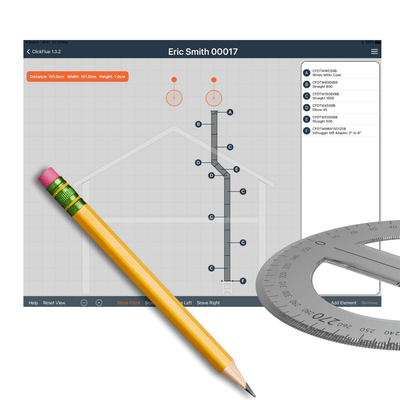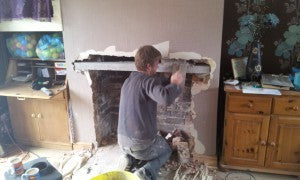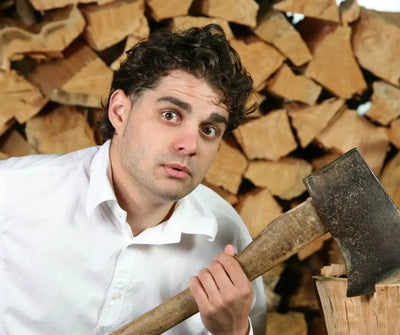Regulations and rules for the chimney
5 mins
UK Log Burner Flue Regulations
UK Chimney regulations can be a confusing or scary concept. If you're wondering what type of chimney you need for your log burner or wood burning stove and what flue regulations you need to follow then StoveFitter's Warehouse are here to help. Some excellent documents by the British Chimney Manufacturer’s Association on this page (really worth a look as easy to read with lots of diagrams) here.
The manual is designed to be used alongside Document J of the Building Regulations England & Wales (stoves without boilers) and Document G of the Building Regulations England & Wales (stoves with boilers) coupled with any advice provided by your local Building Control. Note that regulations for Scotland and Northern Ireland differ slightly and precise details should be checked for compliance. Other regulations may be applicable (e.g. for electrics if adding controls to wet systems). In all cases you should not rely on this manual alone.
You may found the following six-minute video very useful.
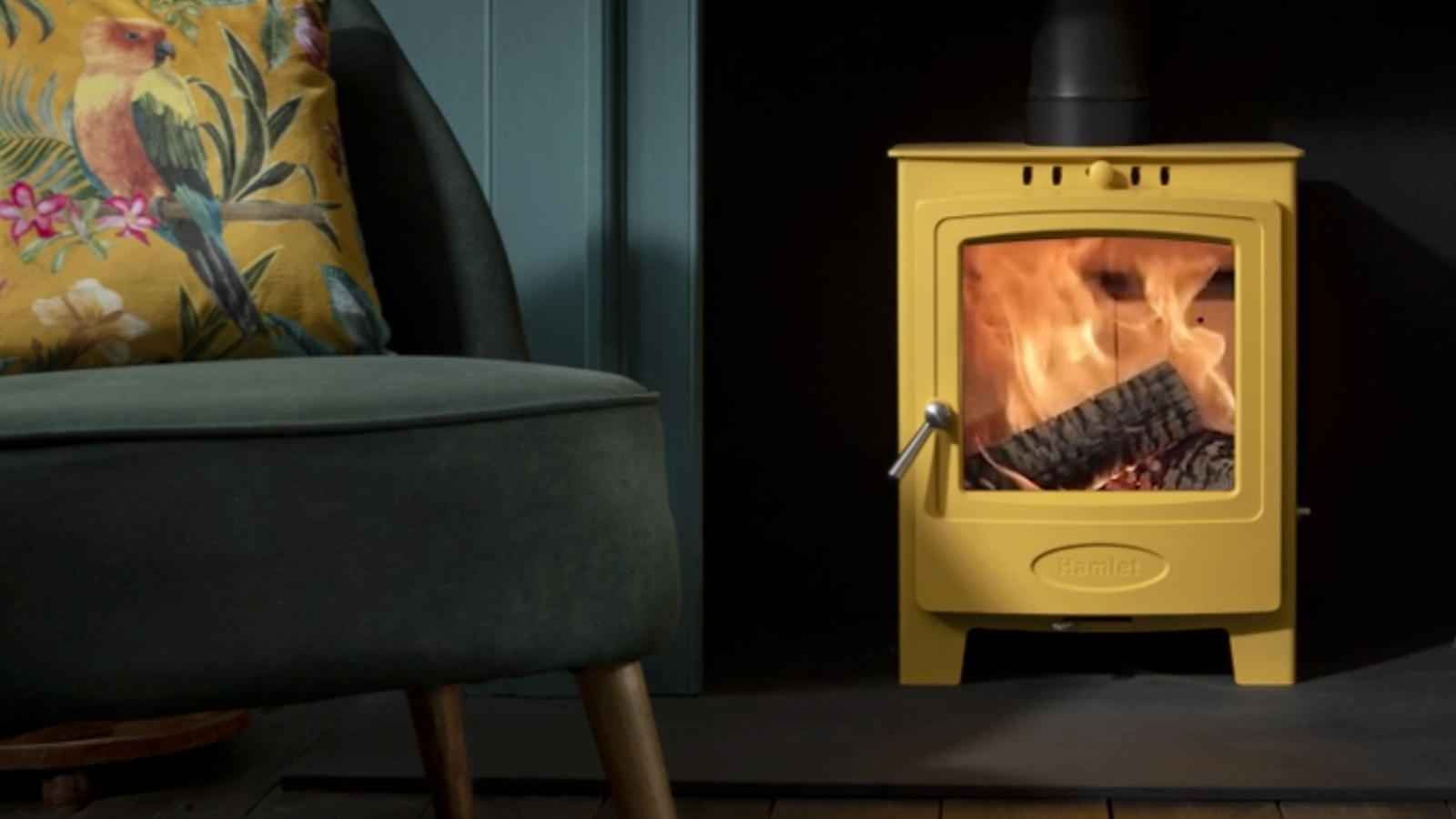
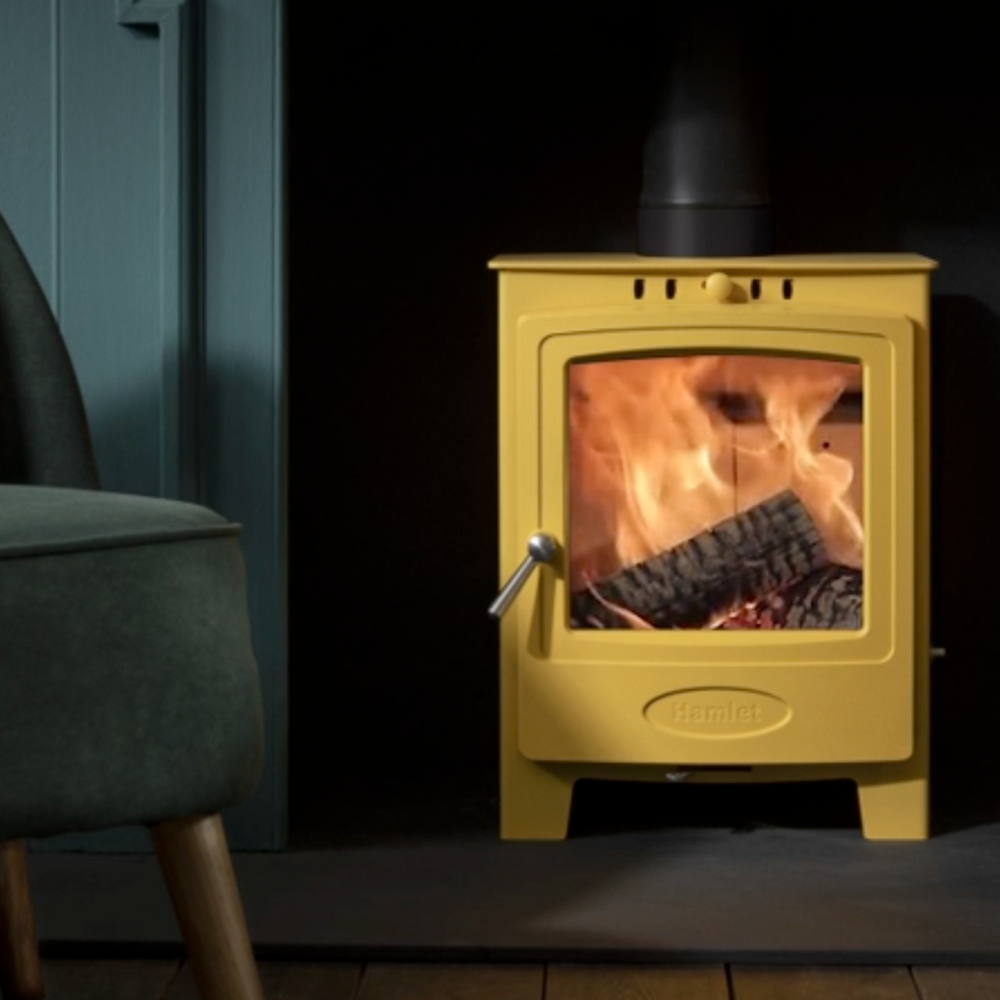
Chimney design rules
6 minutes
Height, bends and smoke termination
1. If the top of the chimney is within 600mm (60cm) of the ridge it should finish 60cm higher than the ridge. We also have the “2.3m rule”. These rules helps ensure draft is not spoiled by wind-induced turbulence.

2. Look at the top of your chimney (where the smoke comes out). Imagine an imaginary horizontal line extending 2.3m in all directions. Nothing should prevent that horizontal line extending to the full 2.3m. This rules helps ensure draft is not spoiled by wind-induced turbulence.

3. As a guide a chimney that is 4.5m high (from top of stove to top of pot) should be high enough to ensure the stove has sufficient draft. With a modern twin wall system you should get away with 3.5m or even 3m if you have to (e.g. out of a shed or caravan or boat).
4. If you have a window anywhere near then check out the regulations (ADJ diagram 17).
5. There must be no bends greater than 45 degrees and there must be no more than four bends in the chimney. If you are using four bends then you must have a soot door between the second and third bend (Building Regs). Note that a “T” off the rear of the stove is classed as two bends (2×45=90).
PLEASE READ ADJ (Document J of the building regulations) PAGES 30 AND 31. READ PAGE 32 ONLY F YOU HAVE AN EASILY COMBUSTIBLE ROOF E.G. THATCHED).
A chimney flue should never be less than 5″ diameter and only certain stoves can use them (DEFRA-approved stoves that allow a 5″ flue can be attached to this diameter flue). Many require a 6″ flue. Some require larger diameter flues. Manufacturer’s instructions may override this and demand a larger diameter than Building regulations ask for.
If a stove requires a flue of a certain diameter you should never connect it to a chimney that has any section with a diameter less than this.
If the stove is DEFRA APPROVED* with a 5″ collar and the stove manufacturer does not state otherwise* then a 5″ liner can be fitted.
** The best way to check this is to download the manufacturer’s fitting instructions from the Internet. This is the document delivered with the stove and the document that a Building Control officer will likely peruse.
Chimney lining
To reduce the diameter of a chimney you can line it with a stainless steel “flexi” (a stove will perform best if the flue diameter of the chimney is as close as possible to that of the stove). One might also use a chimney liner because a brick or stone chimney does not pass a smoke test as required by Building Regulations.

A flexible stainless steel liner should only be used within a structurally sound chimney. It should not be joined along its length (you should not join multiple pieces together to make a length).
Building regs allow you to connect your stove directly to a chimney using the methods they suggest. We look at this in more detail in THE STOVE FIT DIRECT TO CHIMNEY.
You can create your own chimney using HT flue pipe (also known as twin-wall flue pipe).


Installing a twin wall chimney - what do I need?


Installing a stove in a fireplace - what do I need?
Other articles you may find useful
The Stovefitter's Manual
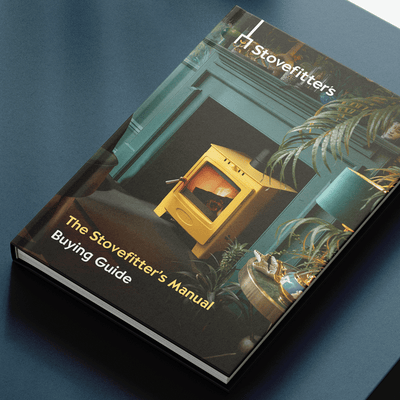
Wood burning stoves installation advice and buyer's guides. Welcome to The Stovefitter's Manual.
Buying & DIY
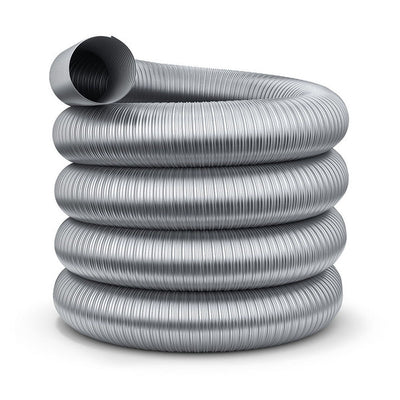
Can I fit a 5″ chimney flue liner?
DIY Guides
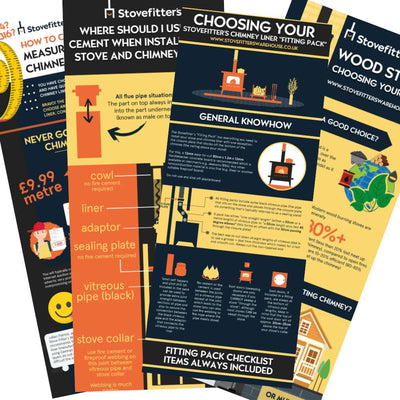
Besides chimney liner what else do I need to install it?
Infographics
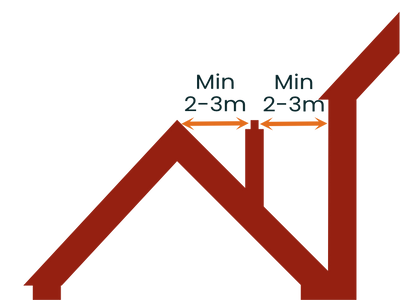
Quick links: Chimney design
DIY Guides
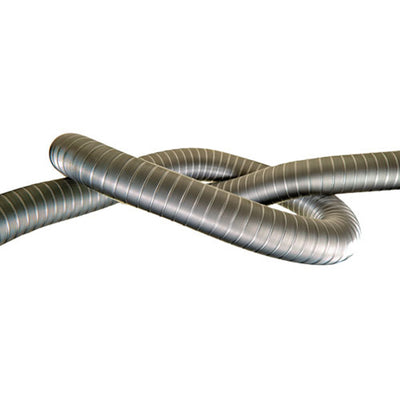
Quick links: Chimney lining

Quick links: Legal stuff. Installer list. Building regs etc.
Rules & regulations

Can I fit a 5″ chimney flue liner?
DIY Guides
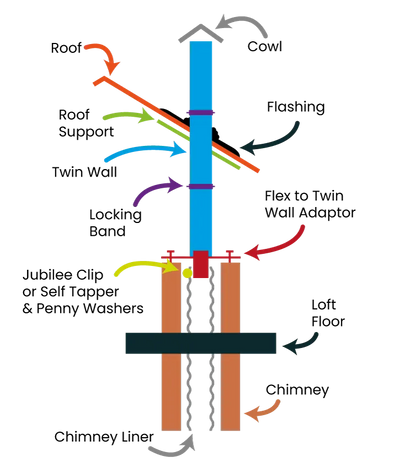
Chimney stack ends in loft (somebody took it down)
DIY Guides
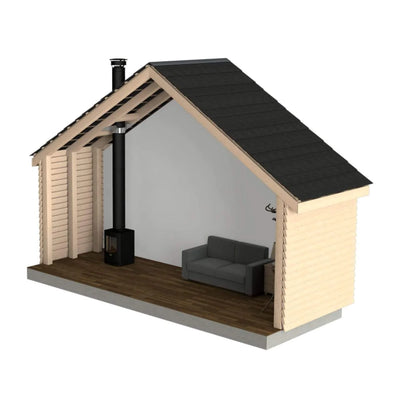
Installing a Twin Wall Flue Chimney System
DIY Guides
FAQs
See all FAQsCosts correct as of April 2023:
Approx. costs if you have a chimney and fireplace ready to use: £750-£1,000 (save £500 by self-installing).
Approx. costs if you have a chimney but need the fireplace "opening up": £1,600-£2,200 (save £1200 by self-installing).
Approx. costs if you do not have a chimney and need a clip-together flue: Shed £475-£700. Bungalow £1500. 2-storey house £2500. Save £1,000-£1400 by self-installing.
Above figures include labour and materials but no appliance.
We, of course, advise you to purchase your stove and materials from Stovefitter's to ensure quality goods are installed (some installers use budget materials to increase margin). If you buy your stove from us (rather than your local small shop or installer) we have a lot more power when approaching manufacturer's with a warranty issue. Why is that? Because we buy many hundreds of stoves a year from these brands.
We do not fit stoves.
But we know a few who do!
Google: Hetas installers
Hetas are the trade body of registered UK installers.
Most installations will require that you slide a chimney liner down your chimney (flexible metal tube 5" or 6" in diameter). Do you have a narrow chimney and want to lessen the risk that a liner might not go down your chimney? Then make sure your chosen stove can use a 5" liner.
Must I line my chimney? Best read this article but most likely the answer is yes. Do I have to fit a chimney liner?
DEFRA-Exempt wood burning stoves with a 5″ collar can usually be fitted to a five inch liner rather than the usual 6″ minimum, making the installer's job much less stressful.
ALL OF THE 5KW STOVES WE SELL CAN BE FITTED TO A 5" CHIMNEY LINER.
I seriously suggest any self installer fits a 5" liner unless they know their chimney is large enough for a 6"!
What is the best chimney liner? Silvacore 904 (we sell it so of course we will say that ;-). What is the best chimney liner?
Useful links
Will your stove require an air vent within the room (some stone walls are very difficult to drill)?
5kW or under and wood burning stoves often do not require an air vent (new builds always require an air vent).
Useful links
What is the maximum output in kW of your "5kW" wood burning stove? The majority of manufacturers just specify the “nominal output” and this figure means very little in real life. The nominal is a figure the manufacturer chooses to sell the stove at - the stove is capable of reaching at least this output with one fuel load. Nominal means "capable of". But it is not the maximum.
Check out the size of the area where the logs will go (firebox size) as this varies enormously. The kW output is completely dependant on the amount of logs burning at any one time - more logs burning equals more heat. If you can fit three logs in stove A and just two logs in stove B then stove A will be capable of throwing out 33% more heat.
DO NOT TRUST MANUFACTURERS’ kW RATINGS as manufacturers specify what output they desire to sell the stove at and testing allows for much “playing with the figures”. This is why you can get very small 5kW stoves (e.g. Aga Little Wenlock) and very large 5kW stoves (e.g. DG Ivar 5 by Dik Geurts which is actually rated 5kW but has a MUCH larger firebox than the Ekol Crystal 5 by Ekol Stoves). A Crystal 5k might get to 5kW and not be capable of any higher whilst a DG Ivar, despite being rated at 5kW, can get to 8kW with a full fuel load.
Note that, over time, one might damage the internal firebricks of a stove by running at a higher load than the manufacturer's suggest. Firebricks are easily replaceable.
Useful links
Will your wood burning stove fit in your recess WITH the required air gaps around it? This is obviously not an issue if your stove will be freestanding.
Air gaps to non-combustible materials (brick, stone etc.) are usually "as close as you like" legally but manufacturers will sometimes specify a recommendation. This recommendation is there to allow heat to escape from the recess into the room - so you get the heat benefit rather than the heat soaking into the building structure and being lost. If no gap to non-combustibles recommended then we suggest 50-100mm air gap left and right of stove, 50mm behind and 100mm above.
Are you in a Smoke Control Area (usually built up areas)?
Choose your stove accordingly.
A stove must be DEFRA-Approved if you wish to burn wood in a smoke control area.
ALL OF THE STOVES WE SELL ARE DEFRA APPROVED FOR SMOKE CONTROL AREAS.
In simple terms if a stove has an efficiency rating of 70% then 30% of the heat from your logs goes up the chimney.
If a stove has an efficiency rating of 90% then only 10% goes up the chimney.
So think of this in terms of how many logs you have to chop/buy.
Example: A Saltfire Peanut 5 by Saltfire Stoves in Dorset has an efficiciency of 80%.
A tall chimney (6m or more) that is lined will be happy with an efficient stove.
Efficiency importance can be said to be overrated and anything between 75% and 85% is fine. Go much higher and performance can actually suffer (smoke in room when opening door to reload, blackening of glass).
Many modern stoves can go on 12mm thick hearths. Others require full, 5″ thick constructional hearths. All of the stoves we sell state whether or not a 12mm hearth is suitable.More about hearths for wood stoves here.
Helpful links
Can you can talk to somebody on the phone should you need to after the wood burning stove has been delivered, especially if you are self installing? Will the staff at “wesellzillionsofstoves.com” be able to assist with any installation issues? What if there are any problems after install?
Do yourself a favour before ordering stoves or materials on the Internet: Go to Trustpilot and type in the company name before you buy. Some companies advertising at the top of search engines are not good news - check for yourself.
When striving to find thebest 5kW wood burning stovesyou will likely be bewildered by the choice. There are many to choose from. The question I get asked most in our shop is “why should I pay <£1,000> for this one when this other one is just <£500>?”. Here is the very simple answer:the cheaper wood stoves are made in Chinaor Eastern Europe whilst the more expensive are made in Western Europe (or sometimes the USA). Here are a few examples where a more expensive stove might excel over a cheaper stove:
- Aesthetics (more time spent on design)
- Hinges (sometimes hidden on more expensive stoves)
- Better quality glass
- Thicker steel (longer life)
- Improved door locking mechanisms
- Longer warranty
- Improved controllabilty of flame due to more resource invested on design of air flow within stove
- Brushed steel fittings instead of cheapy chrome look
Open and close the door on a cheap Chinese stove. Then open and close the door on a DG stove, Arada stoves, Woodford stoves, Hamlet stoves or Saltfire stoves. You’ll understand the difference.
Stove pricing reminds me of wine pricing. A £20 bottle of wine is not double the quality of a £10 bottle of wine (the drinking experience might be improved by 20% as an example). We are talking “the law of diminishing returns here. They are all “fire in a metal box” at the end of the day.
Is the 5kW stove "Ecodesign ready" or "Ecodesign Approved"? Defra approved?
So you do not have to worry every stove we sell is approved by DEFRA and Eco-design certified. Every stove we sell can be installed anywhere in the UK. No need even to read further but feel free...
Stoves sold after 2022 will have to be so. Ecodesign stoves are the very latest models that have passed stringent environmental tests. Stoves already installed prior to the 2022 cut-off date are fully legal so don't worry if you have one of these (the rules are not back-dated).
All of the stoves we sell are Ecodesign approved.
Stoves do not have to be Hetas approved (Hetas is a private organisation for stove installers).
Yes. However, there are specific regulations and restrictions in place to address air pollution concerns, particularly in areas designated as Smoke Control Areas. In these areas, only approved "smokeless" fuels or exempt appliances, such as Defra-approved wood-burning stoves, can be used. These stoves are designed to burn wood more efficiently and produce fewer emissions.
All the stoves we sell are DEFRA approved and Eco-design approved and suitable for all areas of the UK.
Terminology
View all TerminologyA stainless steel tube, slides down a brick/stone chimney to provide a smooth and safe route for smoke.
All of our stoves are approved by DEFRA to burn wood in all UK locations including Smoke Control Areas (towns and cities). Not all stoves are, so be careful if buying elsewhere.
All of our stoves are ECODESIGN approved to be sold in the UK. Not all stoves are, so be careful if buying elsewhere. ECODESIGN is mandatory by law since January 2022.
The base your stove sits on.
If the chimney is the polo mint then the flue is the hole.
Buying guides
View All

How to choose a wood burning stove for your property (includes infographic)
Infographics

What size wood stove do I need? Don't let manufacturers fool you!
Buying Guides
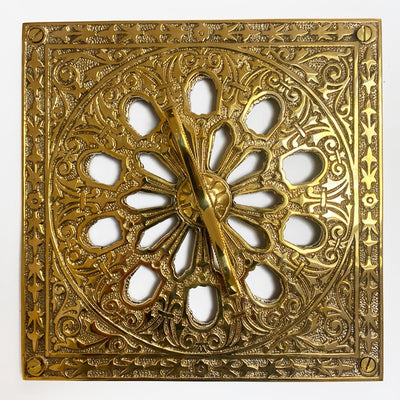
Do I need an air vent for a wood burning stove? If I do not bother?
Buying & DIY

Knowledge Tree: Process of buying and installing a wood burning stove
Buying & DIY
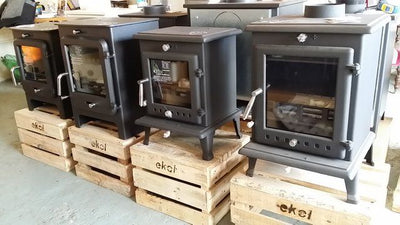
Chinese wood burners – should I buy one or are they all crap?
Buying Guides

What else do I need to buy to install a wood burning stove?
DIY Guides

Infographics for wood burning stove purchase and install
Infographics
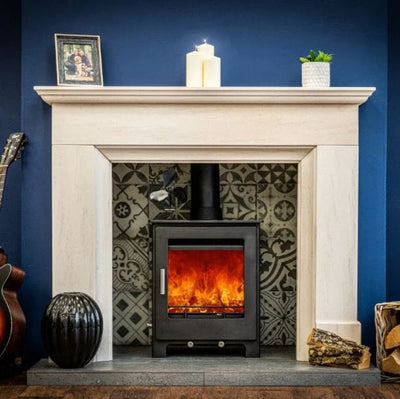
Wood burning or multifuel stove? A stove fitter decides.
Buying Guides
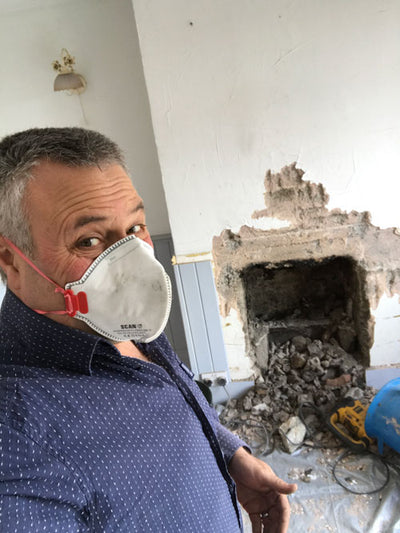
A few words from Julian
Buying & DIY
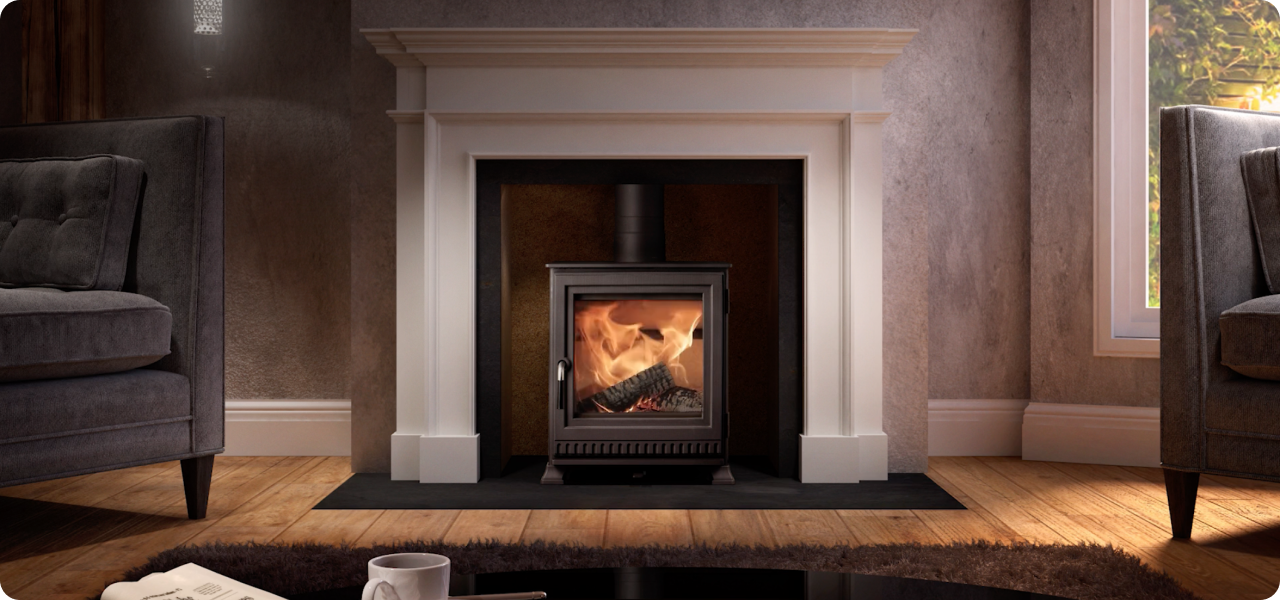
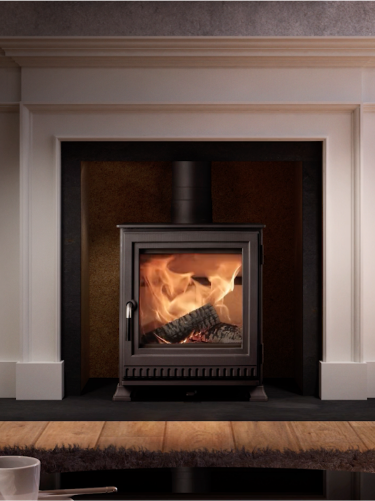
Find my perfect stove
Answer 3 simple questions and we will show you the best Stoves for your space.

